Get Tech Tips
Subscribe to free tech tips.
Tool Selection: Electrical Meters
I'd like to give a special thanks to Tony Gonzalez from Fieldpiece for providing technical guidance about the SC680's power measurement capabilities, as well as VAC and AAC measurements on ECMs. You can learn more about the SC680 and other electrical meters on Fieldpiece's website.
We’ve talked through specifications, applications, and features for a few tools, but none of them have been quite as hardcore as electrical meters. Like combustion analyzers, electrical multimeters can show you many different types of readings.
However, you will need to make sure the ranges, accuracy, and resolution are all appropriate for the work you’ll be doing. Not every electrical meter can accurately measure voltage on inverter-driven systems, and not all of them can measure DC microamps for testing flame sensors.
On top of that, some electrical meters have massive ranges of measurement and may step down their measurement. That design feature could cause you to mistake smaller units for larger ones (or vice versa), such as if a tech were to mistake a low capacitance measurement in the nanofarad scale for a good (or high) microfarad reading. Those are all application-specific considerations that we ought to be aware of when shopping for a new multimeter.
A Broad Look at Specifications
Let’s look at the specs for the Fieldpiece SC680:
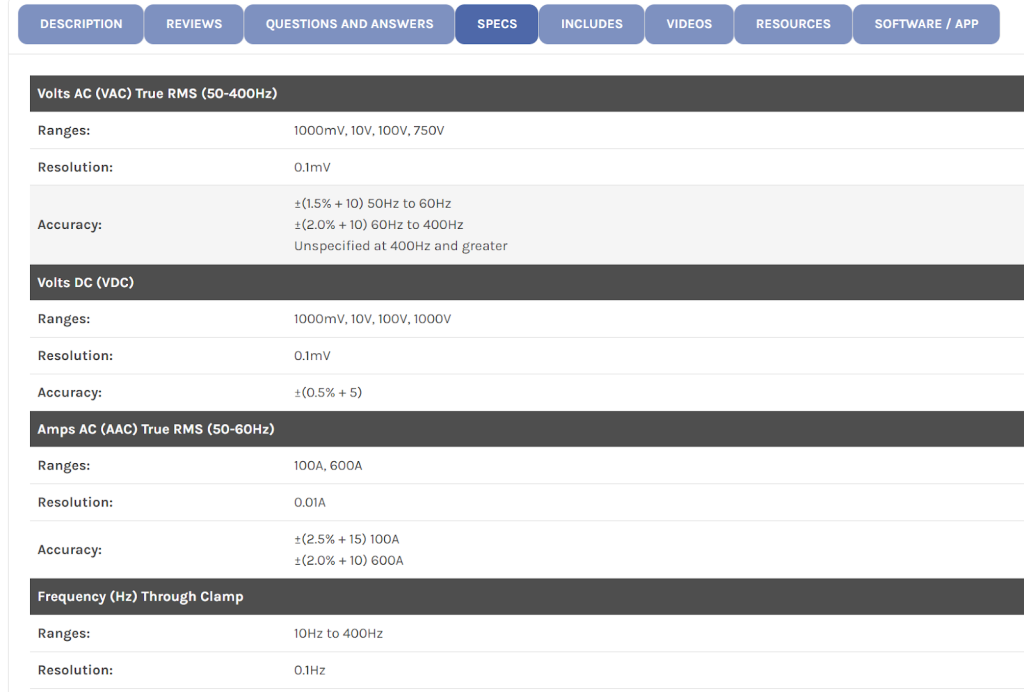
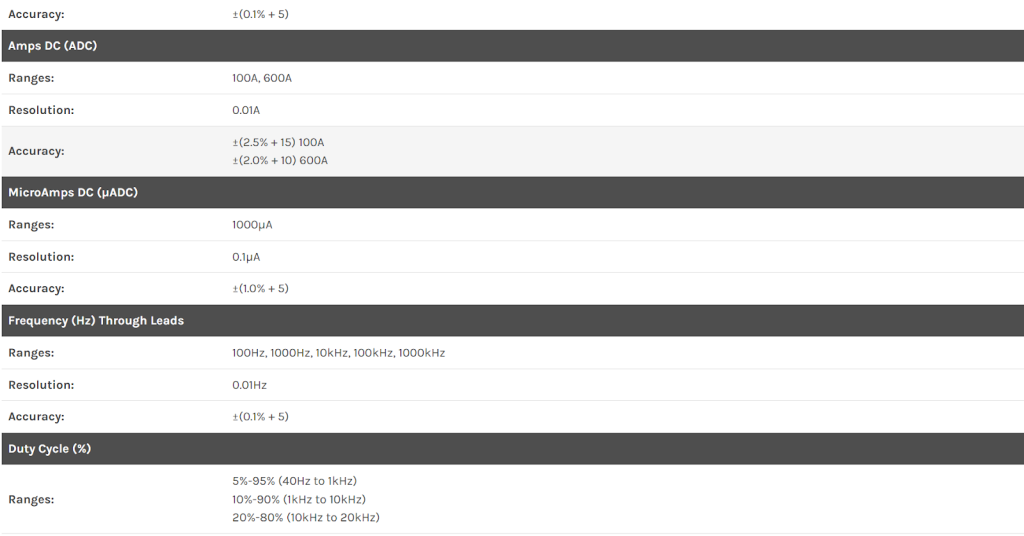
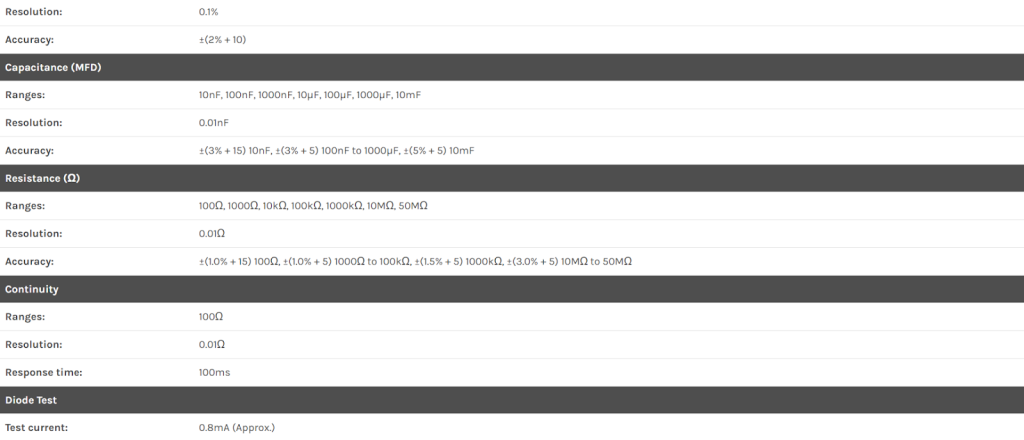

Yes, that’s four separate screenshots. But don’t worry—I’m not going to drone on about each unit; I’m just going to cover some important things to note about range and accuracy.
Range and Auto-Ranging
The SC680 is one of the most versatile multimeters you’ll find for HVAC work, and each also covers a wide range of values—spanning multiple metric units. We can see that when we look at resistance, capacitance, and voltage. The base units of each are ohms (Ω), farads (F), and volts (V).
When we measure capacitance, we usually do so in microfarads (µF). However, the range of the SC680 goes as low as nanofarads (nF), which are 1,000 times smaller than microfarads. If you have an exceptionally weak capacitor, your tool could auto-range into the nanofarad scale. If you’re not paying attention, you could mistake extremely low capacitance for normal or high capacitance if you assume you’re still reading microfarads. However, the display will indicate which one the meter is measuring.
The same is true of ohms, which can also show up in the kilohm (1,000 Ω) and megohm (1,000,000 Ω) scales. Volts could also potentially auto-range to the millivolt scale (1/1,000 V).
Some meters with auto-ranging allow users to turn it off. The SC680 has instructions on how to disable that feature in the manual (pg. 9):
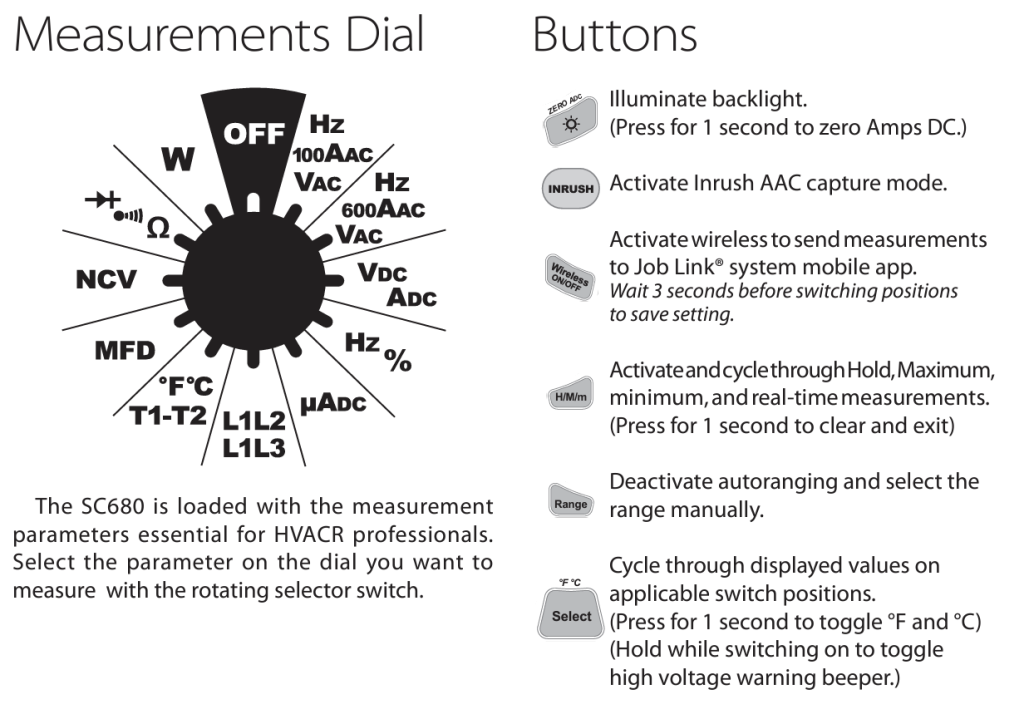
The ranges are often expressed in increments of ten (10V, 100V, 1000V) and in units consisting of multiples of 103, like millivolts (10-3 V), kilohms (103 Ω), and megohms (106 Ω), to accommodate an extremely wide range of values.
Accuracy: Percentage and Digits
You’ll notice that the accuracies are presented in a different format from the others. It has the percentage (which we saw in the manometer and combustion analyzer specs), but it also has a number. Those numbers are referred to as digits, and they represent the room for error with the least significant digits on the display.
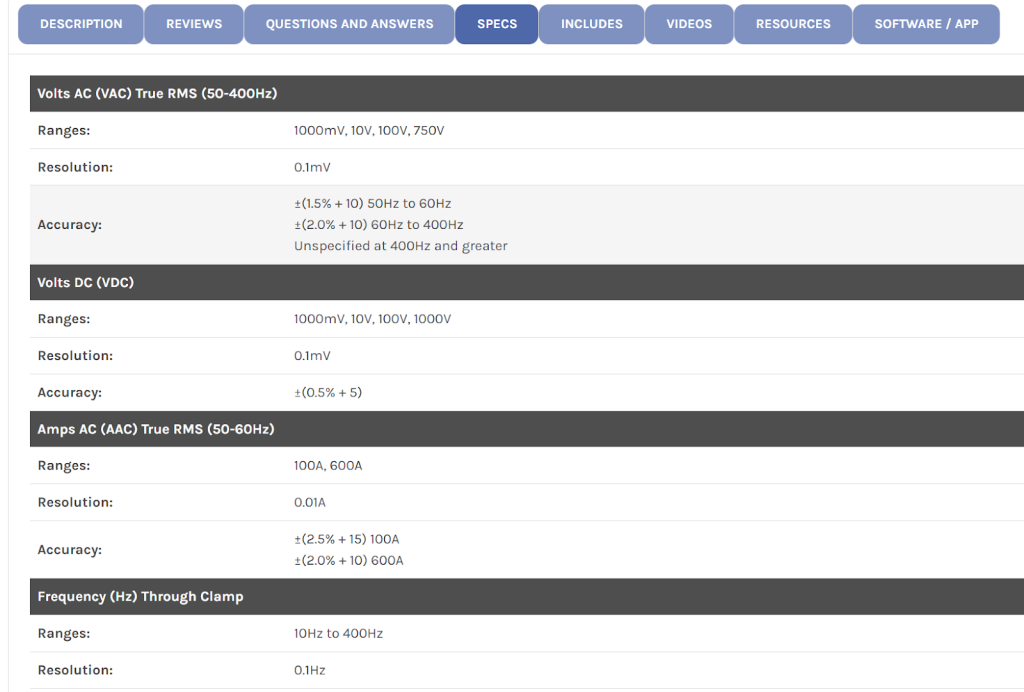
If we were measuring AAC between 100 and 600A, the accuracy is ±2.0% + 10, and the meter’s display shows a resolution of 0.01, then the accuracy range is determined by the 2.0% TIMES 0.10 added to the reading. If the resolution is 0.1, then the accuracy tolerance would be 2.0% x (1.0 + the reading).
I’m not going to get deeper into the weeds because digits can be confusing (Eric Kaiser explains it in detail in his 2024 symposium session, “Tool and Instrumentation Selection”), but just know that the higher the number, the more room for inaccuracy. Keep the digit count and the percentage tolerance in mind, as larger numbers in both cases indicate a broader accuracy range, meaning you could be further away from the true measurement.
Accuracy: True RMS
Whenever we measure voltage and current, we have to keep in mind that the sine waves go through 50–60 cycles per second, depending on the hertz. (It will always be 60 times per second in the USA.) Therefore, our readings are mere averages of the electrical activity. That average is known as the root mean square.
Electrical meters that have true RMS can show accurate averages when taking readings on any type of AC circuit, not just natural sine waves. If you work on inverter-driven systems that merely simulate AC sinusoidal waveforms, you will need a multimeter with true RMS for the most accurate readings. No ifs or buts about it.
There are also non-true RMS meters, which are usually sold at a lower price than true RMS meters. Those will work perfectly fine if you’re only dealing with sinusoidal waveforms. However, with inverter-driven systems becoming more common, you risk picking up vastly inaccurate readings if you’re assigned to a ductless system and only have a non-true RMS meter on hand.
ECM Wattage Considerations
The full list of specs for the SC680 also shows the wattage and power factor accuracy and ranges. Watt draw can be a useful reading to see how much power a component consumes, especially blower fan motors. However, there are two main things to consider when we apply this principle to ECMs (electronically commutated motors).
Regardless of whether you’re dealing with a constant-airflow or constant-torque ECM, these motors do NOT have sinusoidal waveforms, unlike PSC motors. With that in mind, let’s pay attention to one specific line in the specs:
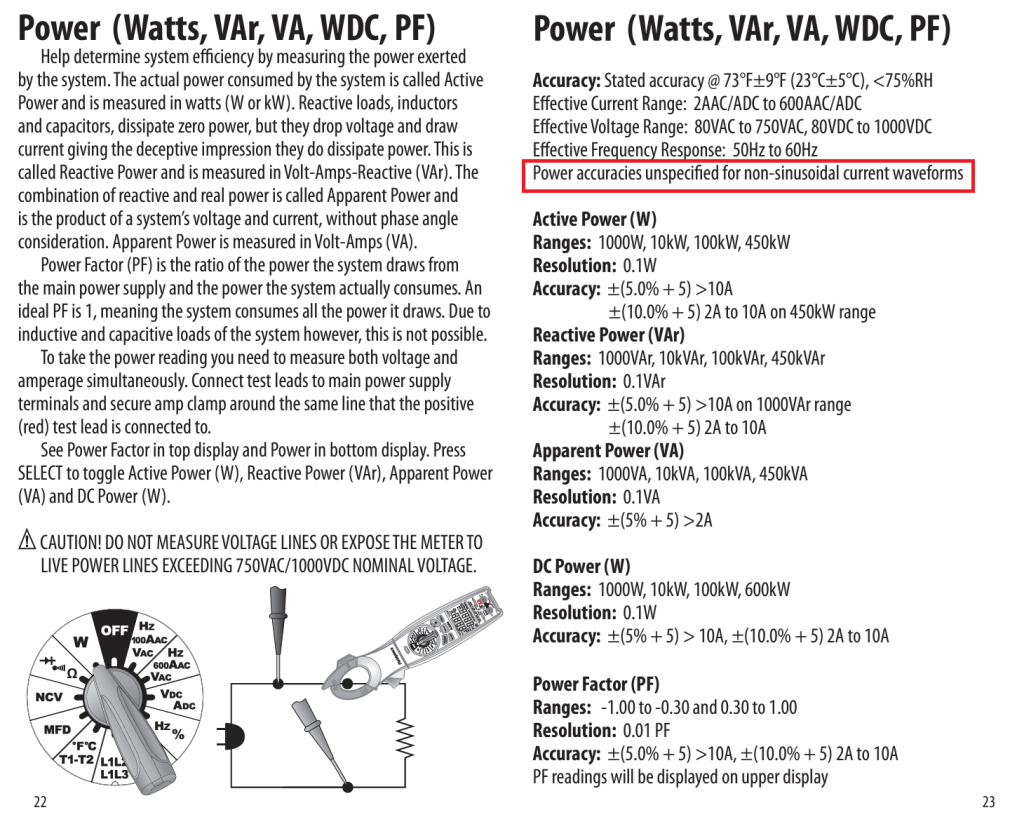
In case the print is a bit too small to see, it says: “Power accuracies unspecified for non-sinusoidal current waveforms.” That’s the manual telling us that this meter isn’t recommended for power calculation on ECMs that produce non-sinusoidal waveforms and could be inaccurate in those scenarios. The power measurement feature on the SC680 is mostly designed to take incoming power measurements to measure the overall power consumption of the outdoor unit.
As a side note, the accuracies stated for VAC and AAC are valid on ECMs and even deploy a low-pass filter, which filters out frequencies greater than 1kHz to provide accurate readings for VAC on things like VFDs.
Moreover, the effective current range runs from 2–600 amps. Users should NOT use this meter to measure power on components drawing <2 amps and expect an accurate reading. The accuracy listing for power factor makes this clear as well; when measuring greater than 10 amps, the accuracy is within 5%, which is excellent. That accuracy range broadens a bit when measuring 2–10 amps (within 10%), but there is no accuracy listing at all for <2 amps, which is also outside the effective current range.
Again, all of this information is in the manual. You may need specific features for the equipment you work on. If the specs don’t line up with what you need, that means you’ll have to look elsewhere. Remember: we’re in charge of our customers’ comfort, and we want to do our best with the information we have. The ultimate goal of thoughtful tool selection is to ensure that the quality of that information is the best it could be.











Comments
To leave a comment, you need to log in.
Log In